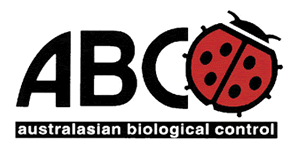Typhlodromips montdorensis is an Australian species of phytoseiid predatory mite collected in southern Queensland during a Horticulture Australia-funded project that began in 1994. Due to its recent 'discovery' the use of montdorensis in commercial crops is in its infancy and research is ongoing.
Montdorensis are small, pale, pear-shaped mites about the same size as twospotted mite. The gut contents take on a yellowish tinge when feeding on thrips larvae, pinkish when feeding on tomato russet mite, and greenish-black or brown when feeding on spider mite.
Eggs are clear and oval and laid on the under surface of leaves (often on hairs), under the calyx of fruit and sepals of flowers, or on cast skins of aphids and other detritus.
|









